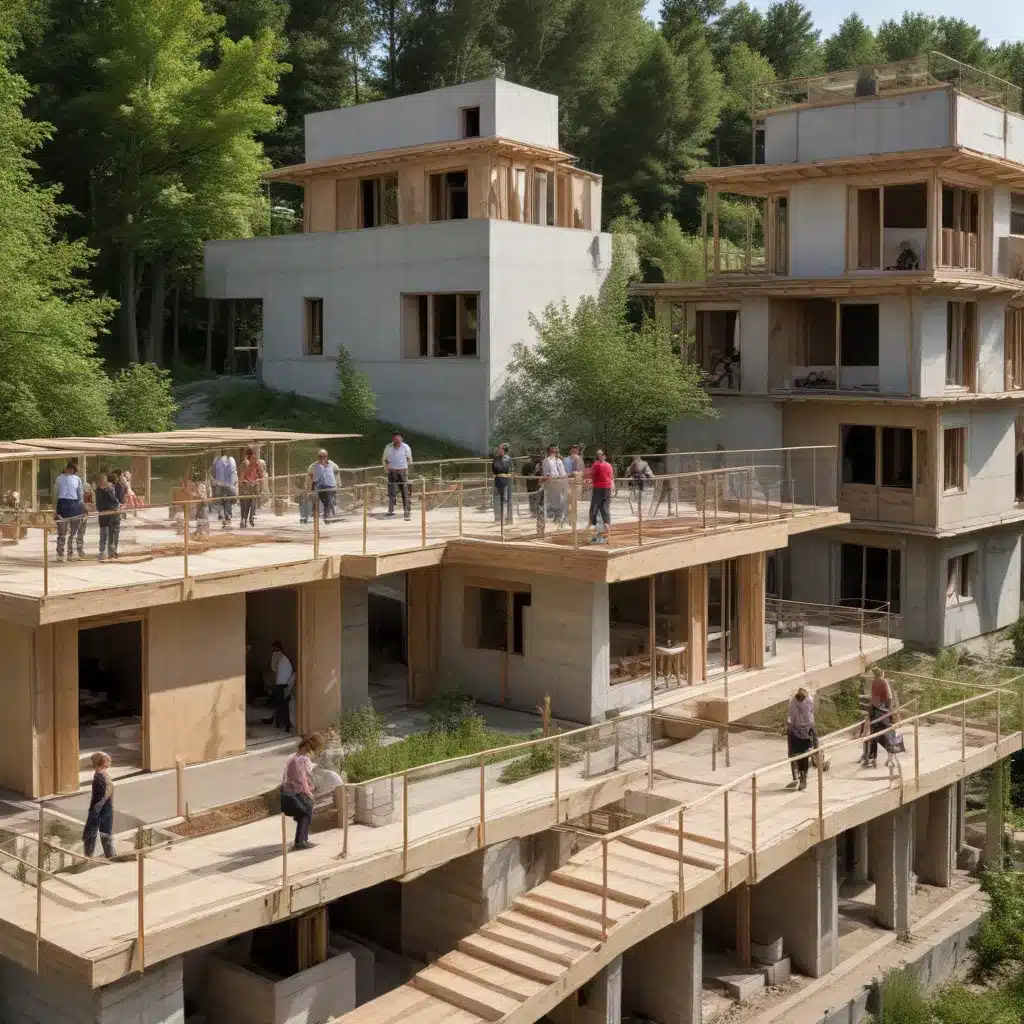
Financing Sustainable Architecture through Public-Private Partnerships and Crowdfunding
Europe’s transition to sustainable energy has gained significant momentum in recent years, driven by ambitious climate targets, innovative financing models, and a growing public appetite for green solutions. As the continent grapples with the dual challenges of decarbonizing its building stock and meeting mounting energy demands, public-private partnerships and community-driven crowdfunding initiatives are emerging as pivotal mechanisms to finance the shift towards sustainable architecture.
Public-Private Partnerships
One of the key avenues for funding sustainable building projects is through public-private partnerships (PPPs). These collaborative agreements leverage the strengths of both the government and private sector to finance, construct, and manage energy-efficient infrastructure.
Leveraging Government Incentives
Governments across Europe are introducing a range of financial incentives to catalyze private investment in sustainable architecture. These include tax credits, subsidies, and feed-in tariffs that offset the upfront costs of technologies like solar photovoltaics, geothermal heat pumps, and energy-efficient retrofits. By aligning public and private interests, PPPs can maximize the impact of these support schemes and accelerate the deployment of low-carbon building solutions.
Risk-Sharing Models
Another key aspect of successful PPPs is the strategic allocation of risks and rewards. Innovative financing models, such as environmental impact bonds, tie financial returns to the environmental performance of a project, incentivizing private partners to deliver tangible sustainability outcomes. This risk-sharing approach not only attracts investment but also ensures the long-term viability and efficacy of sustainable architecture initiatives.
Project Evaluation Criteria
When evaluating potential PPP projects, policymakers and private investors must consider a range of criteria to ensure the optimal allocation of resources. These include the lifecycle costs, energy savings, carbon reduction potential, and community benefits of the proposed solutions. By applying robust evaluation frameworks, PPPs can identify and prioritize the most impactful sustainable architecture projects.
Crowdfunding Initiatives
Alongside traditional financing mechanisms, crowdfunding has emerged as a powerful tool for mobilizing community-driven support and funding for sustainable architecture projects.
Community-Driven Campaigns
Crowdfunding platforms enable local residents, businesses, and civic organizations to directly contribute to the development of energy-efficient buildings, renewable energy infrastructure, and green public spaces. These community-led campaigns not only provide much-needed capital but also foster a sense of ownership and investment in the project’s success.
Crowdsourcing Design Ideas
Beyond just funding, crowdfunding can also serve as a platform for crowdsourcing innovative design ideas and solutions for sustainable architecture. By engaging the public in the creative process, project teams can tap into a diverse pool of expertise and community-driven insights to optimize the design and functionality of their buildings.
Reward-Based Funding Structures
Many crowdfunding initiatives for sustainable architecture employ reward-based funding models, where contributors receive tangible, non-financial benefits in exchange for their support. This could include access to energy-efficient amenities, discounted utility bills, or even a stake in the project’s long-term success.
Regulatory Frameworks
Underpinning the growth of sustainable architecture financing are the evolving policy and regulatory frameworks that guide the transition to a low-carbon built environment.
Policy Incentives
Governments across Europe are introducing a range of policy tools to incentivize sustainable design and construction practices. These include building energy codes, zoning regulations, and carbon pricing schemes that create market signals for developers and homeowners to prioritize energy efficiency and renewable energy integration.
Sustainable Development Goals
The United Nations Sustainable Development Goals (SDGs) have also played a pivotal role in shaping the financing landscape for sustainable architecture. By aligning public and private investment decisions with the environmental and social dimensions of the SDGs, policymakers and investors can ensure that sustainable architecture projects deliver tangible benefits to local communities and the planet.
Project Feasibility
Securing financing for sustainable architecture projects requires a thorough assessment of their technical and financial feasibility, as well as their potential to deliver meaningful environmental and social impact.
Financial Modeling
Rigorous financial modeling and cost-benefit analysis are essential for evaluating the long-term viability of sustainable architecture projects. This includes considering factors such as construction costs, energy savings, maintenance expenses, and the potential for revenue generation through strategies like power purchase agreements or carbon offsets.
Return on Investment
Demonstrating a compelling return on investment (ROI) is crucial for attracting both public and private funding for sustainable architecture initiatives. By quantifying the economic, environmental, and social benefits of these projects, project teams can make a compelling case for investment and secure the necessary financing to bring their visions to life.
Stakeholder Engagement
Successful sustainable architecture financing initiatives often rely on effective engagement and collaboration with a diverse range of stakeholders, from policymakers and industry leaders to local communities and green energy advocates.
Public Participation
Engaging the public through community outreach, public consultations, and co-design workshops can help ensure that sustainable architecture projects address the specific needs and priorities of the communities they serve. This collaborative approach can also foster a sense of ownership and investment in the project’s success.
Investor Relations
Cultivating strong relationships with impact investors, green finance institutions, and other private-sector partners is crucial for securing the necessary funding for sustainable architecture projects. By demonstrating the tangible environmental and social benefits of their initiatives, project teams can attract mission-aligned capital and forge long-term partnerships.
Community Partnerships
Collaborating with local non-profits, civic organizations, and community groups can also be instrumental in securing community-driven funding and support for sustainable architecture projects. These partnerships can unlock access to crowdfunding platforms, foster grassroots advocacy, and ensure that the project’s benefits are equitably distributed within the local community.
As Europe continues to chart its course towards a more sustainable built environment, the innovative financing models and collaborative partnerships explored in this article will be instrumental in unlocking the full potential of sustainable architecture. By harnessing the power of public-private collaborations and community-driven crowdfunding, the continent can accelerate the deployment of energy-efficient buildings, renewable energy infrastructure, and green public spaces that will shape a more resilient and livable future. To learn more about the latest developments in European sustainable energy, I encourage you to visit the European Future Energy Forum.







